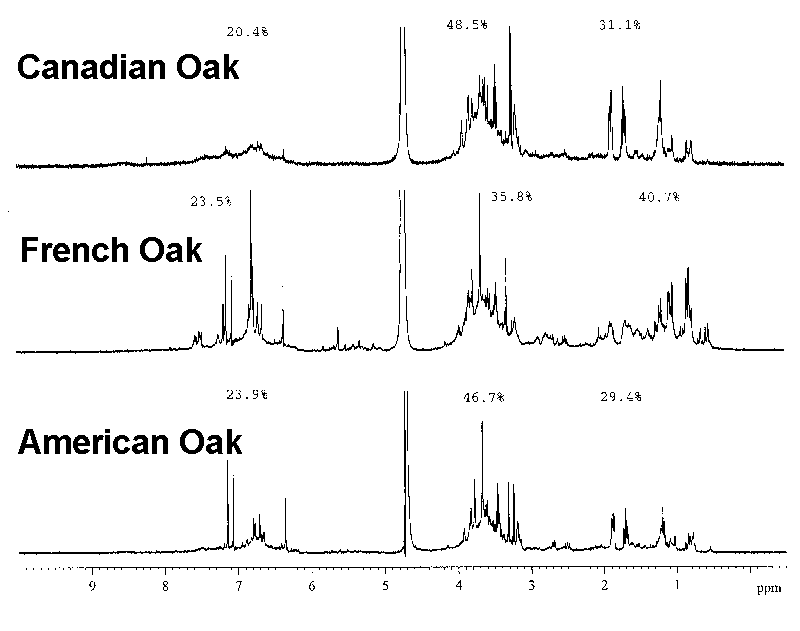|
Chemical Analysis
Chemical and organoleptic profiles of Canadian Oak show that it is different from and intermediate between French and American Oak.
Late in 1999 we had a small number of barrels made at the cooperage in Arkansas that produces most of the American oak casks used in Canada-Gibb Bros. Cooperage, in Hot Springs. We used these barrels in a series of informal winemaking tests. At the outset, we were happily surprised to discover that the Canadian oak barrels smelled very different from either the American or the French oak barrels. Early results from that experiment were extremely encouraging. The Canadian oak seemed to impart a flavor similar to French oak, but with different overtones.
We took aqueous extracts of the three major oak types into the Solid State NMR facility at McMaster University and had a series of spectra generated. All three oaks have different organic compounds; Canadian oak is very similar to American oak, but with strong differences in the range of compounds that resemble vanilla flavor characteristics. In that regard, the Canadian oak was like French oak. Subsequent chemical analysis done by ETS Laboratories in Napa Valley California show similar results.
|


